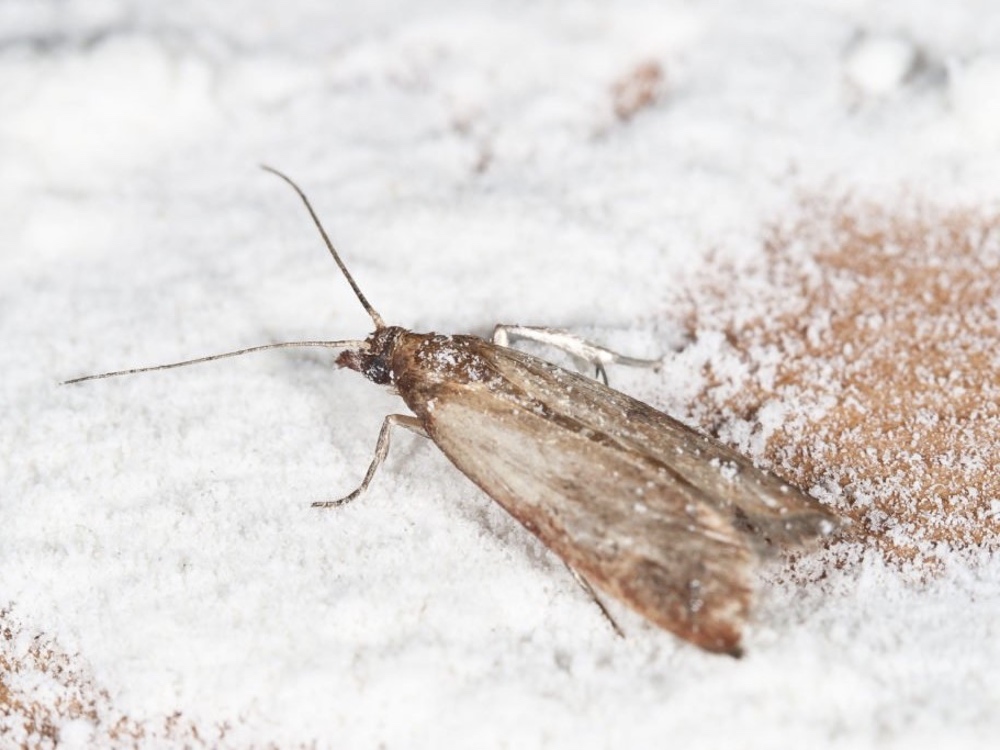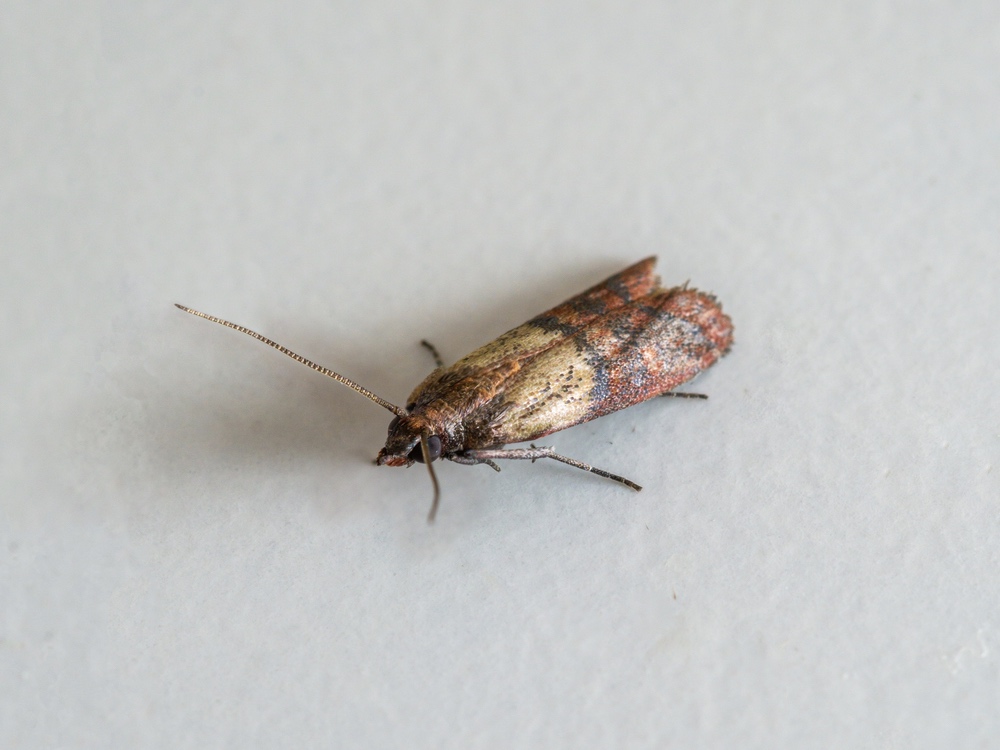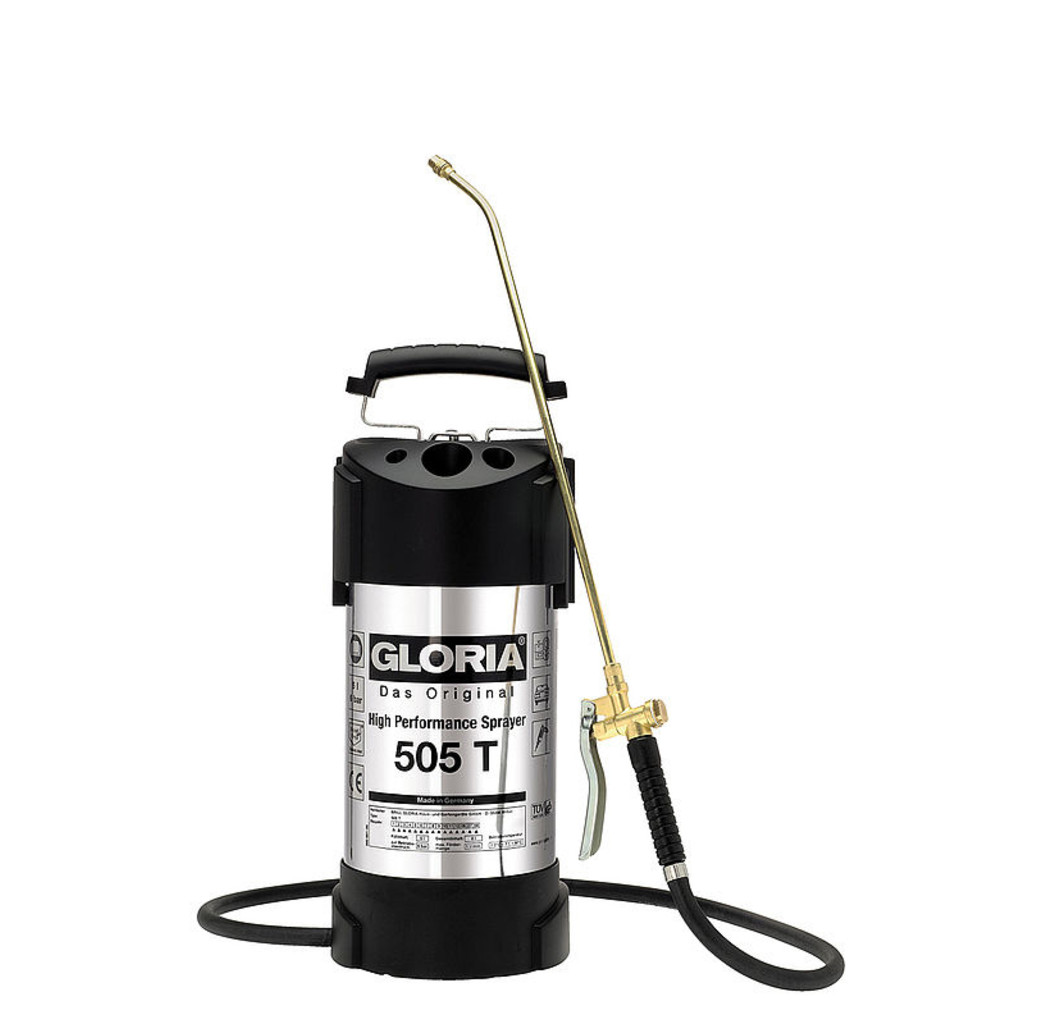Moths you have them in many different shapes and sizes, you can actually divide them into 2 categories such as stock infestations and material infestations.
The most common stock pests include cocoa moth, flour moth and fruit moth, which are often found in kitchens, commodity warehouses or bakeries. The larvae of these moths cause damage to food supplies or other products such as dried flower arrangements (these may also contain nuts).
Material infestations can be found, for example, in animal materials such as woolen clothing, stuffed animals, insulation materials containing animal material, etc. Dress moths, fur moths and brown house moth are common material infesters.
Contact Protect Pest Control for determination of moth infestation with associated control.

Moths can cause a lot of damage to products such as cocoa, chocolate products, cereals, nuts, dried vegetables or fruits, flour, carpet, insulation containing hair, fur, feathers, hides and stuffed animals. The larvae in these products cause a lot of damage by contaminating the products with their droppings, spiders, dead moths and fungi. Also, the quality of wool, carpets, furs, skins, etc. deteriorates due to moths (larvae).
This is often very annoying for people/businesses as it often leads to a nice damage. Protect Pest Control sees this happening regularly and can help you get rid of moths in a safe and effective way. Thus, we fight all types of moths in the best way.

This moth does damage products by its droppings, spinning and dead moths make stocks unusable.
Length adult cocoa moth 1 to 2 cm with the same dimension in the wingspan, the larvae are off-white in color and have a length of 1 to 1.5 cm. These moths prefer high temperatures of around 25 degrees, at 10 degrees or somewhat lower, development is virtually stalled. Development time from egg to adult is between 60 to 100 days at a temperature of 26 degrees.
Preferred cocoa, grains, nuts, flour, dried vegetables or fruits.

The Meal Moth has a length of 1 cm and a wingspan of 2 to 2.8 cm, the front wings are gray in color on the front and back yellow-white. Above 20 degrees, development is lightning fast in 90 days, the flour moth can develop completely from egg to adult flour moth. At lower temperatures, development slows or even stops. This moth prefers all kinds of products such as starches, flour, oatmeal, etc.
This moth does damage products by its droppings, spinning and dead moths make stocks unusable.
By the way, it is characteristic of wood mice that they often drag feed boxes full of pebbles.

Fruit moths grow 1 to 2 cm long and have a wingspan of 1.5 to 2 cm. Larvae are about 1 to 1.5 cm long. Females lay up to 500 eggs in 20 days. This moth is very fast with its development from egg to adult, with a temperature of 25 degrees it only takes about 35 days. It prefers cocoa, nuts, cereal flour and other plant products on its menu.
This moth does damage products by its droppings, spinning and dead moths make stocks unusable.
A characteristic of field mice is that they almost never climb and jump.

An adult clothes moth measures 0.7 to 0.8 cm and has a wingspan of 1.1 to 1.7 cm. The larva is off-white in color and is about 1 cm long. Under favorable conditions and a temperature of 22 degrees, development from beginning to end is 3 months. 50 to 100 eggs are deposited mostly in wool or other animal material, often in dark and quiet places. Wool, carpets, feathers, fur and insulation material with horse and cow hair in it, especially the latter, can cause a lot of damage.

Long before you will see one moth, there are probably dozens or more living in your home, because a moth is excellent at making itself invisible at first. Moths deposit many eggs, so an explosion of moths may occur.
From the moment you start seeing moths, it is usually an indication that you are already dealing with an infestation. The hiding places in your home or storage are probably already full of eggs and cocoons by then, which is when the moths start to hatch en masse.
The sooner you notice their presence, the sooner Protect Pest Control can intervene for you.
Leaving a moth infestation untreated is highly inadvisable, as it can lead to a true infestation and the risks of affecting supplies and materials can then no longer be prevented.
Protect Pest Control uses safe and effective techniques to successfully control moths properly. In cases where the infestation has greatly expanded through a property, it can only be controlled by a professional. Contact Protect Pest Control now to schedule an on-site appointment or for advice and more information.
Moths can be controlled through several techniques viz;
With pheromone traps these capture the male moths making reproduction disrupted or impossible.
Spraying and or atomizing : The liquid is sprayed into seams and cracks where the moths reside, disadvantage of this method is that in many cases the home/space must be left for 3 hours.
Protect Pest Control offers you an appropriate customized solution after an on-site appointment or telephone contact. This is how we help you through the best way to control moths. We have years of experience as a pest control company and are certified. In addition, we use an environmentally conscious way of control. Protect Pest Control discusses with you the number of treatments needed to achieve the desired result and also gives you advice for prevention after the control.
